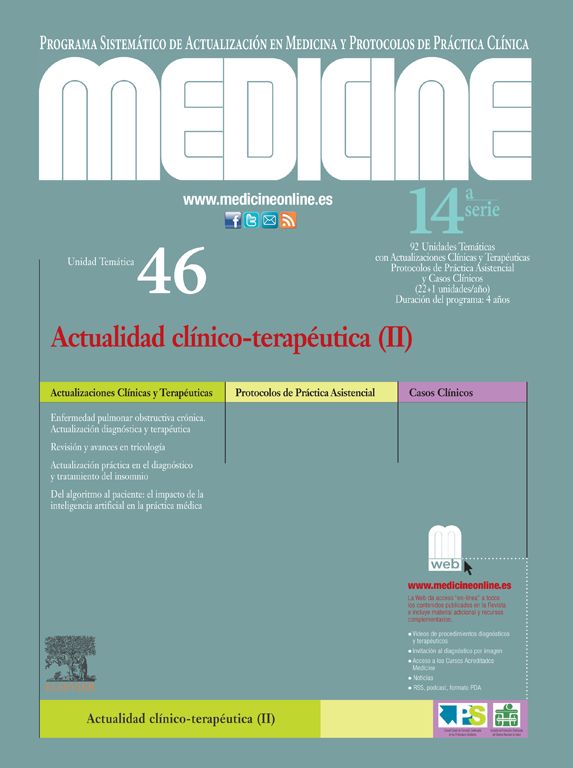La hemorragia alveolar difusa (HAD) es un síndrome clínico de instauración rápida y progresiva, habitualmente de mal pronóstico, que requiere una actuación rápida y un manejo agresivo debido a su alta morbimortalidad, y que tiene su origen en enfermedades muy diversas. Se define clínicamente por la presencia de hemoptisis, anemia, infiltrados alveolares bilaterales y difusos en la radiografía de tórax e hipoxemia. Los hallazgos histopatológicos incluyen la presencia de glóbulos rojos en los alvéolos y la detección de hemosiderina en los macrófagos tras 48–72 horas desde la hemorragia. Se puede clasificar por su histología en: sangrado pulmonar con y sin capilaritis, y sangrado por daño alveolar difuso, siendo el primero la causa más frecuente. Una exhaustiva historia y una detallada exploración física, análisis de sangre, serología de hepatitis B y C y la determinación de anticuerpos específicos para las enfermedades del tejido conectivo y vasculitis sistémica son necesarios para orientar el diagnóstico etiológico. La confirmación del diagnóstico de HAD debe establecerse mediante la realización precoz de una broncoscopia y los hallazgos en el lavado broncoalveolar (LBA), cuando el material obtenido tras la aspiración es progresivamente más hemorrágico. Los pilares del tratamiento son los corticosteroides, inmunosupresores y la plasmaféresis, en algunos casos.
Palabras clave
Diffuse alveolar hemorrhage (HAD) is a clinical syndrome of rapidly progressive establishment, usually poor prognosis, requiring swift action and aggressive management due to its high morbidity and mortality and has its origin in a variety of diseases. Is clinically defined by the presence of hemoptysis, anemia, and bilateral diffuse alveolar infiltrates on chest radiograph and hypoxemia. Histopathological findings include the presence of red blood cells in the alveoli and hemosiderin detection macrophages 48–72 hours after hemorrhage. It can be classified by their histology in pulmonary capillaritis without bleeding, and bleeding from diffuse alveolar damage, the first being the most frequent cause. A thorough history and detailed physical examination, blood tests, serology for hepatitis B and C and the determination of antibodies specific for connective tissue diseases and systemic vasculitis are needed to guide the etiological diagnosis. Confirmation of the diagnosis of HAD to be established by the early completion of bronchoscopy and findings in bronchoalveolar lavage (BAL) when the material obtained after aspiration is progressively hemorrhagic. The mainstay of treatment is corticosteroids, immunosuppressants and plasmapheresis, in some cases.
Keywords
Identifíquese
¿Aún no es suscriptor de la revista?
Comprar el acceso al artículo
Comprando el artículo el pdf del mismo podrá ser descargado
Teléfono para incidencias
De lunes a viernes de 9h a 18h (GMT+1) excepto los meses de julio y agosto que será de 9 a 15h






